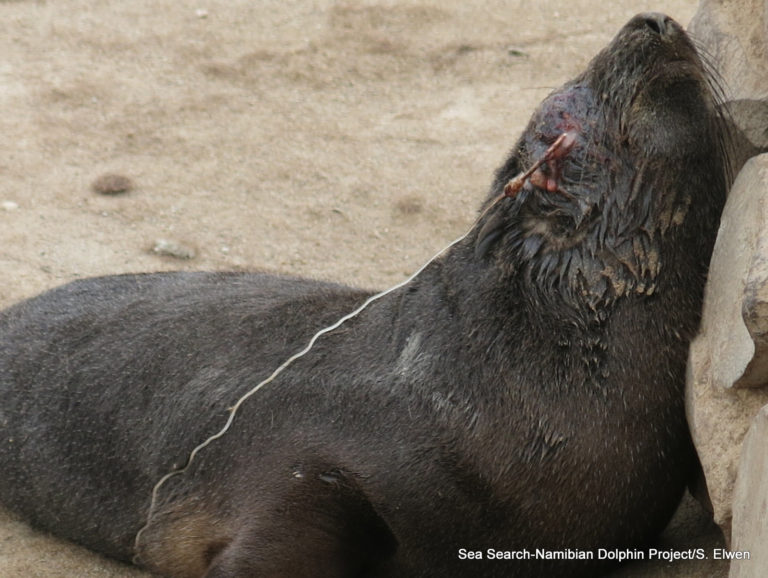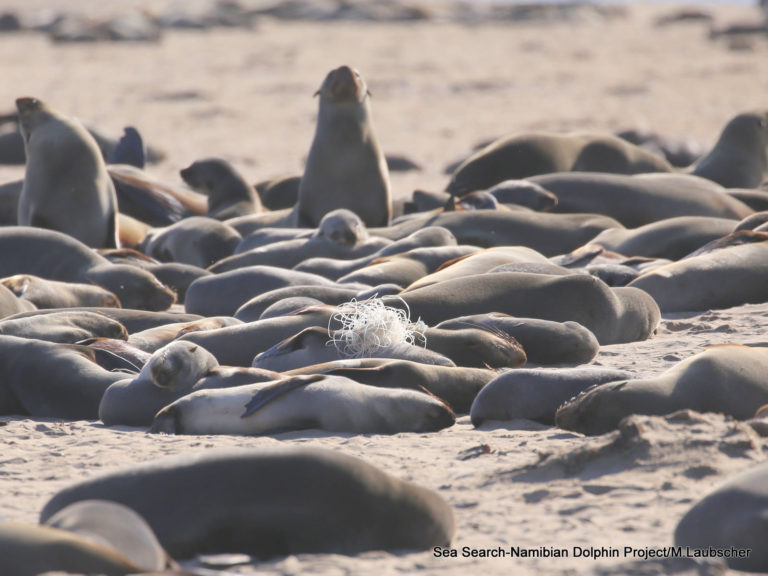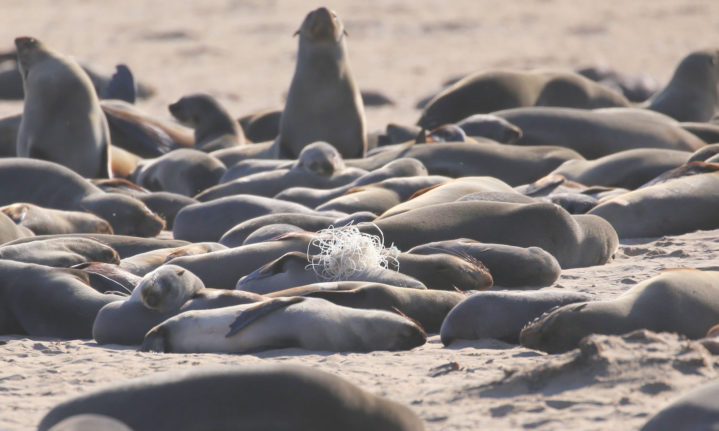Warning: Graphic images
As much as 91 million tons of plastic have entered the world’s oceans between 1980 and 2015, with more than 8 million tons added every year. This has adverse effects on marine life and Stellenbosch University, Sea Search-Namibian Dolphin Project and Ocean Conservation Namibia have collaborated in a research project to untangle cape fur seals caught in marine pollution.

Media release issued by Stellenbosch University, Sea Search-Namibian Dolphin Project and Ocean Conservation Namibia, Friday 20 August 2021
Fishing line and nets are having a major impact on Cape fur seals (Arctocephalus pusillus pusillus), the most common marine mammal observed around the coastline of South Africa and Namibia, where they are endemic.
While their population numbers are considered healthy, plastic pollution, and particularly fishing line and nets, are causing horrific injuries and can result in a slow, painful death.
These are the first results from an ongoing project, initiated in 2018, to investigate the impact of pollution on Cape fur seals in Namibia. The project involves researchers and conservationists from Stellenbosch University, Sea Search-Namibian Dolphin Project and Ocean Conservation Namibia.
The team monitors the entanglement rates of seals and Ocean Conservation Namibia have been disentangling many of the animals affected. The first results from the project were published this week in the scientific journal Marine Pollution Bulletin.

The study demonstrated that a high number of affected animals were pups and juveniles, which were mainly entangled around the neck by fishing line. Rates of entanglement were roughly 1 per 500 animals. Of the 347 entangled animals documented, the disentanglement team were able to successfully disentangled 191 individuals between 2018 and March 2020.
Dr Tess Gridley, co-director of the Namibia Dolphin Project and an extraordinary senior lecturer in the Department of Botany and Zoology at Stellenbosch University, says there is still much more to do: “Plastic pollution and particularly lost and discarded fishing nets are having a big impact to marine life. Once entangled, these seals face a very painful and uncertain future: finding food becomes harder and wounds can become deep and debilitating, and likely cause death in many cases. Changes to policy could help, such as financial incentives to recover lines, safe disposal of nets and sustainable alternatives to plastics.”

According to Dr Simon Elwen, co-director of the Namibian Dolphin Project and also associated with SU’s Department of Botany and Zoology, fur seals are especially vulnerable to becoming entangled: “They are very curious and playful animals and will investigate objects in the water, but their thick, backwards-facing fur which keeps them warm at sea easily snags lines and straps and stops it falling back off.”
Naudé Dreyer from Ocean Conservation Namibia says the project is ongoing: “Since the start of 2021, we have already disentangled over 600 fur seals in only two colonies. This is the tip of the iceberg. It is imperative that studies such as this highlight the consequences of plastic waste on marine animals, and bring around change for the better”.
Pictures: Namibian Dolphin Project
ALSO READ
Facts about African penguins and how to help save this endangered bird

















